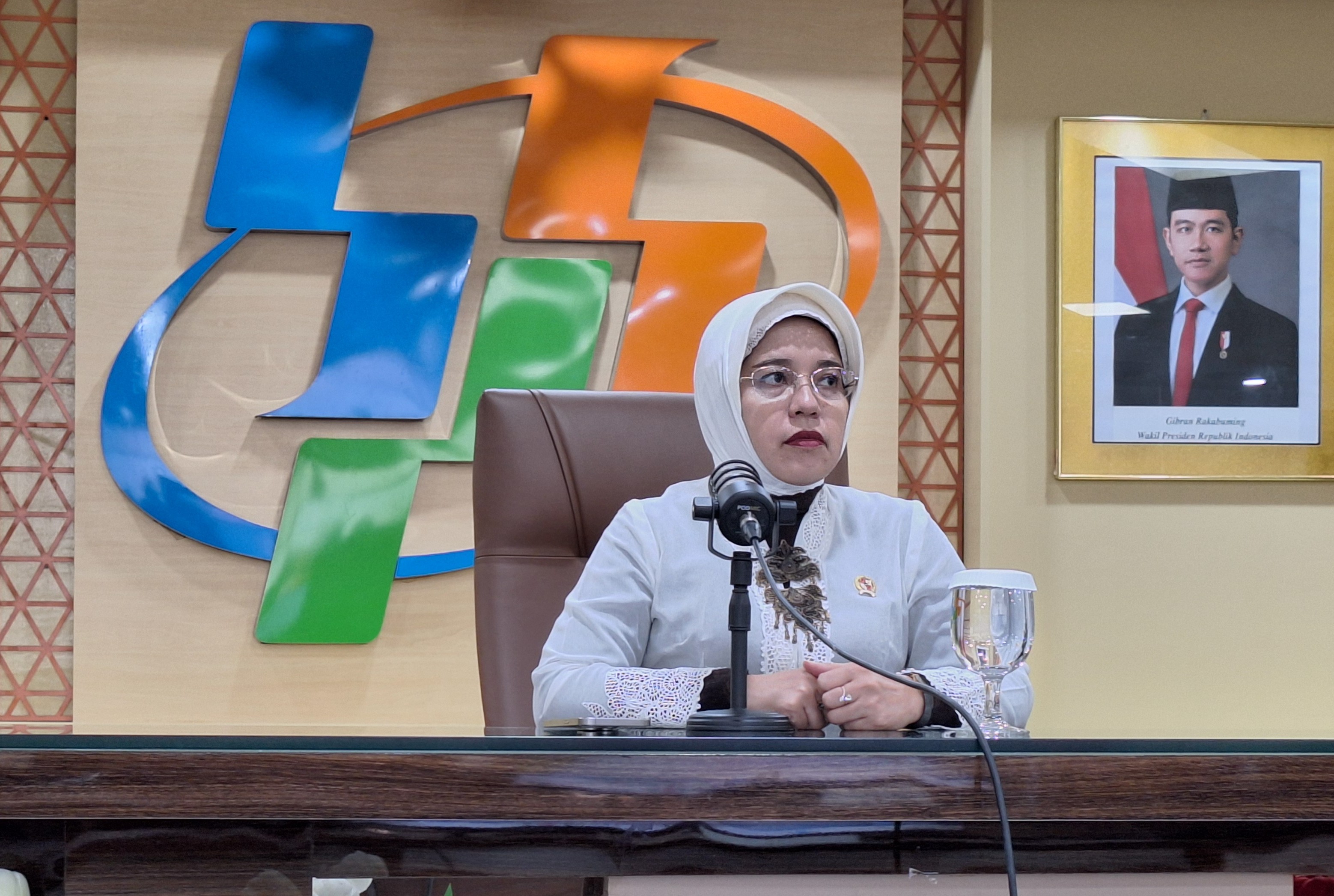Indonesia’s Q1 Economic Growth Slows to 4.87% Amid Commodity Slump and Fiscal Caution
Main Takeaways
|
JAKARTA, investortrust.id — Indonesia’s economy has grown 4.87% year-on-year in the first quarter of 2025, the weakest start to a calendar year since 2015 outside the pandemic period. The modest expansion marks the first quarterly snapshot under President Prabowo Subianto’s leadership, raising early questions about the pace of post-election recovery.
The figure was released by Indonesia’s statistics agency, Statistics Indonesia (BPS), on Monday, and falls short of the government’s annual budget growth assumption of 5.2%. Measured at current prices, gross domestic product (GDP) stood at Rp 5,665.9 trillion ($359 billion), while in constant prices it reached Rp 3,264.5 trillion ($207 billion). On a quarter-to-quarter basis, however, the economy contracted by 0.98%, underscoring seasonal and structural pressures.

Photo: Investortrust/Maulana Kautsar
BPS Chief Amalia Adininggar Widyasanti stated the economy showed resilience in most sectors except mining, which contracted due to softening commodity prices. Agriculture led all sectors with 10.52% year-on-year growth, contributing 1.11 percentage points to overall GDP growth. Other strong performers included corporate services and miscellaneous services, which expanded by 9.27% and 9.84%, respectively.
In contrast, the mining sector shrank by 1.23%, dragged down by global price corrections. Coal and nickel prices declined both quarterly and annually, while palm oil prices dropped in the first quarter but remained higher than a year ago.
Consumption Remains Key Driver, But Government Spending Falls
From the expenditure side, household consumption—which typically accounts for more than half of the economy—grew by 4.89% year-on-year, supported by increased mobility and seasonal spending during Ramadan and Eid holidays. Export activity also performed strongly, rising 6.78% thanks to non-oil and gas shipments and a rebound in international tourism.
However, government consumption contracted by 1.38%, with BPS attributing the decline to delayed disbursement of public funds due to administrative realignments early in the new administration. “Some budget reallocations are being finalized and will be felt in Q2 and beyond,” Amalia said.
Investment, or gross fixed capital formation, slowed to just 2.12% growth, affected by weaker demand for vehicles and non-construction equipment. “Construction remains steady, but other investment components have decelerated,” Amalia noted.
Imports grew by 3.96%, contributing a negative 19.74% to GDP due to the widening trade gap, while spending by nonprofit institutions serving households (NPISH) increased 3.07%.
Parallels With Jokowi’s First Year
Economic observers drew parallels between the current slowdown and the early months of President Joko Widodo’s first term in 2015. Bhima Yudhistira, Executive Director at the Center of Economic and Law Studies (Celios), said both administrations faced softening commodity prices and rising geopolitical risks in their inaugural years.
“Just like in 2015, Indonesia’s economy is entering a transition phase. Commodity windfalls enjoyed by previous administrations are no longer available. In fact, President Prabowo is facing rising trade tensions and volatile global demand,” Bhima said.
Wijayanto Samirin, an economist from Paramadina University, echoed the sentiment, pointing to falling investor appetite and sluggish global demand. He added that current weakness was also driven by domestic factors such as reduced purchasing power and rising layoffs, which began in late 2024.
Regional Comparisons and Market Resilience
Despite the moderation, Indonesia’s growth remains among the highest in the region. Coordinating Minister for Economic Affairs Airlangga Hartarto emphasized that the country’s Q1 GDP growth was second only to China’s 5.4%. It outpaced Malaysia’s 4.4%, Singapore’s 3.8%, and Spain’s 2.9%, while trailing slightly behind Vietnam.
Minister of State-Owned Enterprises Erick Thohir also called the 4.87% growth rate “relatively strong” given global uncertainties, including trade tensions and regional conflicts. “Many had predicted growth below this number. So 4.87% is a good result,” Erick said.
He also pointed to strong fundamentals, citing a recovery in the Jakarta Composite Index (IHSG) and the rupiah’s relative stability. The stock market responded positively, with the IHSG gaining five straight sessions and touching an intraday high of 6,877, driven by gains in energy, finance, infrastructure, and consumer stocks.
Forward Outlook
According to BPS, sectors such as manufacturing and trade contributed meaningfully to growth, with year-on-year increases of 4.55% and 5.03%, respectively. The information and communications sector also expanded by 7.72%, reinforcing its role as a key driver of the digital economy.
Amalia acknowledged that while some sectors remained robust, others require closer policy attention. “The first quarter is traditionally soft due to budget cycles. But we expect stronger results in the second quarter as fiscal disbursement picks up,” she said.

